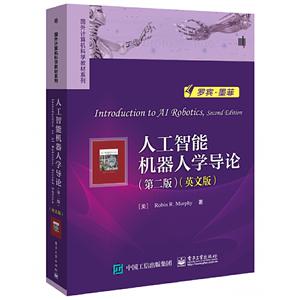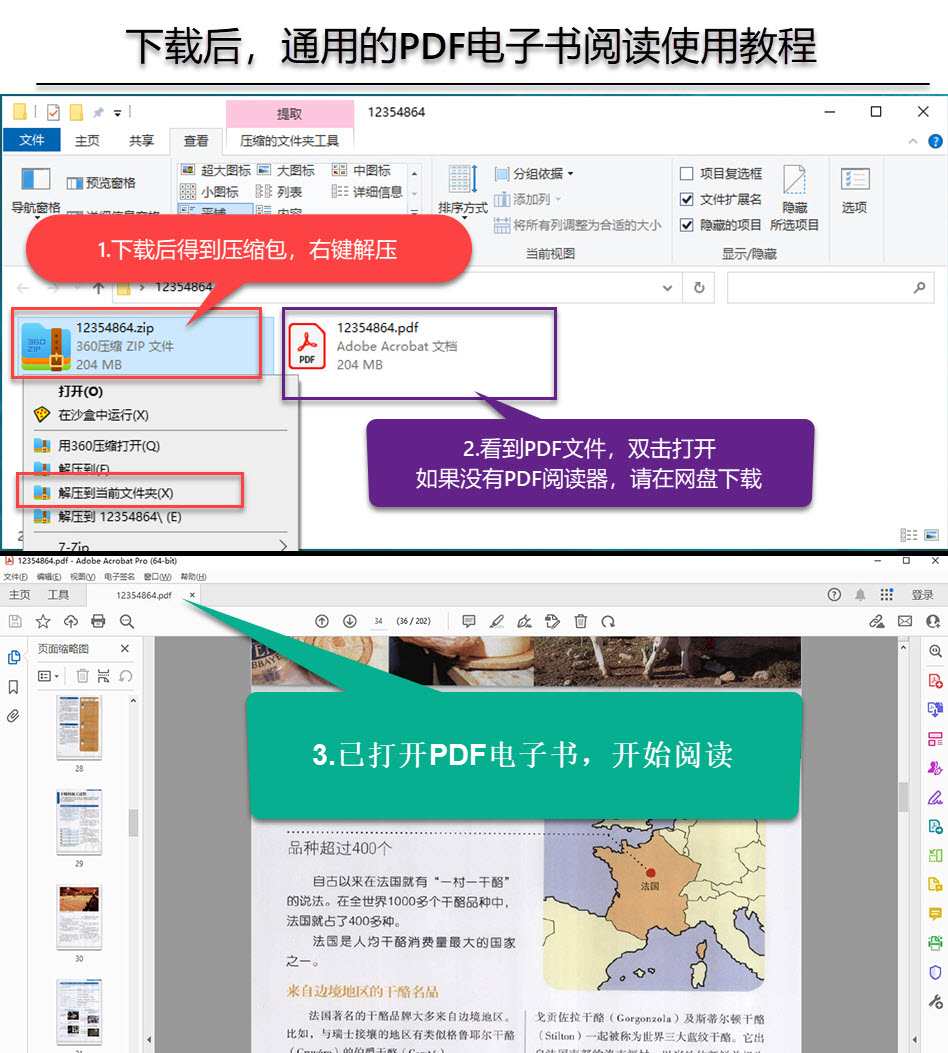国外计算机科学教材系列人工智能机器人学导论(第2版)(英文版)/(美)ROBIN R. MURPHY
本书特色
[
本书首先介绍人工智能机器人的定义、历史和体系结构,然后全面系统地阐述人工智能机器人在传感、感知、运动、规划、导航、学习、交互等方面的基础理论和关键技术。全书共分为五部分。*部分共5章,定义了什么是智能机器人,介绍了人工智能机器人简史,并讨论了自动化与自治、软件体系结构和遥操作;第二部分共6章,针对机器人的反应(行为)层智能展开讨论,分别对应机器人行为、感知与行为、行为协调、运动学、传感器与感知,以及距离感知等方面的内容;第三部分共5章,详细讨论机器人的慎思层智能,包括慎思层的内涵、导航、路径和动作规划、定位、建图与探索,以及机器学习等内容;第四部分共2章,讨论机器人的交互层智能,包括多机器人系统和人-机器人交互;第五部分共2章,分别介绍自治系统的设计与评估方法,以及与机器人相关的伦理问题。
]
内容简介
[
本书首先介绍人工智能机器人的定义、历史和体系结构,然后全面系统地阐述人工智能机器人在传感、感知、运动、规划、导航、学习、交互等方面的基础理论和关键技术。全书共分为五部分。部分共5章,定义了什么是智能机器人,介绍了人工智能机器人简史,并讨论了自动化与自治、软件体系结构和遥操作;第二部分共6章,针对机器人的反应(行为)层智能展开讨论,分别对应机器人行为、感知与行为、行为协调、运动学、传感器与感知,以及距离感知等方面的内容;第三部分共5章,详细讨论机器人的慎思层智能,包括慎思层的内涵、导航、路径和动作规划、定位、建图与探索,以及机器学习等内容;第四部分共2章,讨论机器人的交互层智能,包括多机器人系统和人-机器人交互;第五部分共2章,分别介绍自治系统的设计与评估方法,以及与机器人相关的伦理问题。
]
作者简介
[
分别于1980年、1989年和1992年在美国佐治亚理工学院获得机械工程学学士学位、计算机科学硕士和博士学位,现任德克萨斯农工大学计算机科学与工程系的Raytheon荣誉教授,机器人辅助搜索与救援研究中心主任,IEEE会士,曾任IEEE机器人和自动化执行委员会执委。研究方向为人工智能,人-机器人交互,以及异构多机器人系统。已发表100多部/篇出版物,是国际上救援机器人和人-机器人交互领域的开创者之一。
Robin R. Murphy分别于1980年、1989年和1992年在美国佐治亚理工学院获得机械工程学学士学位、计算机科学硕士和博士学位,现任得克萨斯农工大学计算机科学与工程系Raytheon荣誉教授,机器人辅助搜索与救援研究中心主任。IEEE会士,曾任IEEE机器人和自动化执行委员会执委。研究方向为人工智能、人-机器人交互,以及异构多机器人系统。已发表100多部/篇出版物,是国际范围内救援机器人和人-机器人交互领域的开创者之一。
]
目录
I Framework for Thinking About AI and Robotics 1 What Are Intelligent Robots? 1.1 Overview 1.2 Definition: What Is an Intelligent Robot? 1.3 What Are the Components of a Robot? 1.4 Three Modalities: What Are the Kinds of Robots? 1.5 Motivation: Why Robots? 1.6 Seven Areas of AI: Why Intelligence? 1.7 Summary 1.8 Exercises 1.9 End Notes 2 A Brief History of AI Robotics 2.1 Overview 2.2 Robots as Tools, Agents, or Joint Cognitive Systems 2.3 World War II and the Nuclear Industry 2.4 Industrial Manipulators 2.5 Mobile Robots 2.6 Drones 2.7 The Move to Joint Cognitive Systems 2.8 Summary 2.9 Exercises 2.10 End Notes 3 Automation and Autonomy 3.1 Overview 3.2 The Four Sliders of Autonomous Capabilities 3.2.1 Plans: Generation versus Execution 3.2.2 Actions: Deterministic versus Non-deterministic 3.2.3 Models: Open- versus Closed-World 3.2.4 Knowledge Representation: Symbols versus Signals 3.3 Bounded Rationality 3.4 Impact of Automation and Autonomy 3.5 Impact on Programming Style 3.6 Impact on Hardware Design 3.7 Impact on Types of Functional Failures 3.7.1 Functional Failures 3.7.2 Impact on Types of Human Error 3.8 Trade-Spaces in Adding Autonomous Capabilities 3.9 Summary 3.10 Exercises 3.11 End Notes 4 Software Organization of Autonomy 4.1 Overview 4.2 The Three Types of Software Architectures 4.2.1 Types of Architectures 4.2.2 Architectures Reinforce Good Software Engineering Principles 4.3 Canonical AI Robotics Operational Architecture 4.3.1 Attributes for Describing Layers 4.3.2 The Reactive Layer 4.3.3 The Deliberative Layer 4.3.4 The Interactive Layer 4.3.5 Canonical Operational Architecture Diagram 4.4 Other Operational Architectures 4.4.1 Levels of Automation 4.4.2 Autonomous Control Levels (ACL) 4.4.3 Levels of Initiative 4.5 Five Subsystems in Systems Architectures 4.6 Three Systems Architecture Paradigms 4.6.1 Trait 1: Interaction Between Primitives 4.6.2 Trait 2: Sensing Route 4.6.3 Hierarchical Systems Architecture Paradigm 4.6.4 Reactive Systems Paradigm 4.6.5 Hybrid Deliberative/Reactive Systems Paradigm 4.7 Execution Approval and Task Execution 4.8 Summary 4.9 Exercises 4.10 End Notes 5 Telesystems 5.1 Overview 5.2 Taskable Agency versus Remote Presence 5.3 The Seven Components of a Telesystem 5.4 Human Supervisory Control 5.4.1 Types of Supervisory Control 5.4.2 Human Supervisory Control for Telesystems 5.4.3 Manual Control 5.4.4 Traded Control 5.4.5 Shared Control 5.4.6 Guarded Motion 5.5 Human Factors 5.5.1 Cognitive Fatigue 5.5.2 Latency 5.5.3 Human: Robot Ratio 5.5.4 Human Out-of-the-Loop Control Problem 5.6 Guidelines for Determining if a Telesystem Is Suitable for an Application 5.6.1 Examples of Telesystems 5.7 Summary 5.8 Exercises 5.9 End Notes II Reactive Functionality 6 Behaviors 6.1 Overview 6.2 Motivation for Exploring Animal Behaviors 6.3 Agency and Marr’s Computational Theory 6.4 Example of Computational Theory: Rana Computatrix 6.5 Animal Behaviors 6.5.1 Reflexive Behaviors 6.6 Schema Theory 6.6.1 Schemas as Objects 6.6.2 Behaviors and Schema Theory 6.6.3 S-R: Schema Notation 6.7 Summary 6.8 Exercises 6.9 End Notes 7 Perception and Behaviors 7.1 Overview 7.2 Action-Perception Cycle 7.3 Gibson: Ecological Approach 7.3.1 Optic Flow 7.3.2 Nonvisual Affordances 7.4 Two Perceptual Systems 7.5 Innate Releasing Mechanisms 7.5.1 Definition of Innate Releasing Mechanisms 7.5.2 Concurrent Behaviors 7.6 Two Functions of Perception 7.7 Example: Cockroach Hiding 7.7.1 Decomposition 7.7.2 Identifying Releasers 7.7.3 Implicit versus Explicit Sequencing 7.7.4 Perception 7.7.5 Architectural Considerations 7.8 Summary 7.9 Exercises 7.10 End Notes 8 Behavioral Coordination 8.1 Overview 8.2 Coordination Function 8.3 Cooperating Methods: Potential Fields 8.3.1 Visualizing Potential Fields 8.3.2 Magnitude Profiles 8.3.3 Potential Fields and Perception 8.3.4 Programming a Single Potential Field 8.3.5 Combination of Fields and Behaviors 8.3.6 Example Using One Behavior per Sensor 8.3.7 Advantages and Disadvantages 8.4 Competing Methods: Subsumption 8.4.1 Example 8.5 Sequences: Finite State Automata 8.5.1 A Follow the Road FSA 8.5.2 A Pick Up the Trash FSA 8.6 Sequences: Scripts 8.7 AI and Behavior Coordination 8.8 Summary 8.9 Exercises 8.10 End Notes 9 Locomotion 9.1 Overview 9.2 Mechanical Locomotion 9.2.1 Holonomic versus Nonholonomic 9.2.2 Steering 9.3 Biomimetic Locomotion 9.4 Legged Locomotion 9.4.1 Number of Leg Events 9.4.2 Balance 9.4.3 Gaits 9.4.4 Legs with Joints 9.5 Action Selection 9.6 Summary 9.7 Exercises 9.8 End Notes 10 Sensors and Sensing 10.1 Overview 10.2 Sensor and Sensing Model 10.2.1 Sensors: Active or Passive 10.2.2 Sensors: Types of Output and Usage 10.3 Odometry, Inertial Navigation System (INS) and Global Positioning System (GPS) 10.4 Proximity Sensors 10.5 Computer Vision 10.5.1 Computer Vision Definition 10.5.2 Grayscale and Color Representation 10.5.3 Region Segmentation 10.5.4 Color Histogramming 10.6 Choosing Sensors and Sensing 10.6.1 Logical Sensors 10.6.2 Behavioral Sensor Fusion 10.6.3 Designing a Sensor Suite 10.7 Summary 10.8 Exercises 10.9 End Notes 11 Range Sensing 11.1 Overview 11.2 Stereo 11.3 Depth from X 11.4 Sonar or Ultrasonics 11.4.1 Light Stripers 11.4.2 Lidar 11.4.3 RGB-D Cameras 11.4.4 Point Clouds 11.5 Case Study: Hors d’Oeuvres, Anyone? 11.6 Summary 11.7 Exercises 11.8 End Notes III Deliberative Functionality 12 Deliberation 12.1 Overview 12.2 Strips 12.2.1 More Realistic Strips Example 12.2.2 Strips Summary 12.2.3 Revisiting the Closed-World Assumption and the Frame Problem 12.3 Symbol Grounding Problem 12.4 GlobalWorld Models 12.4.1 Local Perceptual Spaces 12.4.2 Multi-level or HierarchicalWorld Models 12.4.3 Virtual Sensors 12.4.4 Global World Model and Deliberation 12.5 Nested Hierarchical Controller 12.6 RAPS and 3T 12.7 Fault Detection Identification and Recovery 12.8 Programming Considerations 12.9 Summary 12.10 Exercises 12.11 End Notes 13 Navigation 13.1 Overview 13.2 The Four Questions of Navigation 13.3 Spatial Memory 13.4 Types of Path Planning 13.5 Landmarks and Gateways 13.6 Relational Methods 13.6.1 Distinctive Places 13.6.2 Advantages and Disadvantages 13.7 Associative Methods 13.8 Case Study of Topological Navigation with a Hybrid Architecture 13.8.1 Topological Path Planning 13.8.2 Navigation Scripts 13.8.3 Lessons Learned 13.9 Discussion of Opportunities for AI 13.10 Summary 13.11 Exercises 13.12 End Notes 14 Metric Path Planning and Motion Planning 14.1 Overview 14.2 Four Situations Where Topological Navigation Is Not Sufficient 14.3 Configuration Space 14.3.1 Meadow Maps 14.3.2 Generalized Voronoi Graphs 14.3.3 Regular Grids 14.3.4 Quadtrees 14.4 Metric Path Planning 14.4.1 A* and Graph-Based Planners 14.4.2 Wavefront-Based Planners 14.5 Executing a Planned Path 14.5.1 Subgoal Obsession 14.5.2 Replanning 14.6 Motion Planning 14.7 Criteria for Evaluating Path and Motion Planners 14.8 Summary 14.9 Exercises 14.10 End Notes 15 Localization, Mapping, and Exploration 15
封面

书名:国外计算机科学教材系列人工智能机器人学导论(第2版)(英文版)/(美)ROBIN R. MURPHY
作者:(美)Robin R. Murphy(罗
页数:636
定价:¥139.0
出版社:电子工业出版社
出版日期:2018-02-01
ISBN:9787121372339
PDF电子书大小:149MB 高清扫描完整版
本文标题:《国外计算机科学教材系列人工智能机器人学导论(第2版)(英文版)/(美)ROBIN R. MURPHY》PDF下载
资源仅供学习参考,禁止用于商业用途,请在下载后24小时内删除!

